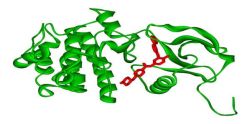In the recent issue of the journal Oncotarget, Ralph Weichselbaum, chairman of radiation oncology and co-director of the Ludwig Center for Metastasis Research at the University of Chicago, and his colleges present a glimpse of oligometastasis.
Oligometastasis refers to a stage of cancer in which a primary tumour has spawned only a few localised secondary tumours, generally no more than five. Weichselbaum, along with Samuel Hellman, former dean of the University of Chicago's Division of Biological Sciences, described the state of oligometastasis twenty years ago. They suggested that oligometastatic tumours could be cured with targeted local treatment such as surgery or focused radiation.
The researchers gathered genetic information from tumour samples from their own clinical trials. They used this information to identify small clusters of gene-blocking microRNAs expressed only by oligometastatic cells. They also showed how certain microRNAs could shut down specific genes.
They found that 14 of these microRNAs were encoded by a small chromosomal region called 14q32. The region is considered to be quite important for early embryonic development and the mutations of genes found in this region have been linked to several childhood diseases.
During their study, the researchers found that many of the genes suppressed by the microRNAs were involved in pathways that enabled cancerous cells to adhere to other cell types and invade tissues as well as migrate to different sites. The researchers call this the AIM phenotype because these cells lack the ability to adhere, invade or migrate. They give rise to less aggressive tumours that can be cured with local therapy.
The research team suggests that the microRNAs could provide a personalised biomarker and can help physicians predict how aggressively a tumour can spread. This could guide treatment.
Weichselbaum's team identified four microRNAS from the 14q32 cluster that correlated with a good prognosis. They also found that overexpression of these four microRNAs was associated with a longer recurrence-free interval after the surgical removal of secondary tumours. Approximately sixty percent of 24 patients with elevated levels of these microRNAs had no recurrence after five years of follow-up and seventy percent with low microRNA had a recurrence within the first year.
The team conducted additional tests that confirmed that three of the four microRNAs suppressed the rapid growth of new lung tumours in immunocompromised mice. They also found that blocking the TGFBR2 gene suppressed cellular adhesion and invasion and reduced the number of lung metastases. In addition, inhibiting ROCK2 suppressed invasion and reduced the number of metastases.
The authors thus conclude that these findings "support our hypothesis of oligometastasis as a clinical entity with biological mechanisms and molecular properties that may differ from polymetastatic disease. Our results set the stage for improved identification of patients with oligometastasis and guide the development of therapies to limit metastasis development.”
Source: University of Chicago Medical Center
Image Credit: Wikimedia Commons























